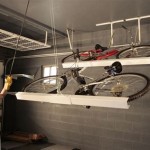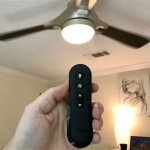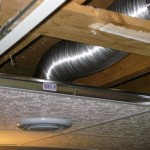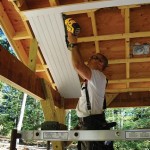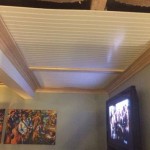Common Ceiling Fan Problems and How to Fix Them
Ceiling fans provide a welcome respite from the heat, offering a cool breeze and energy savings compared to air conditioning. However, like any mechanical device, they can experience issues that interrupt their smooth operation. Identifying and addressing these common problems ensures your ceiling fan continues to provide optimal performance and longevity.
1. Noise and Vibration
A well-functioning ceiling fan should operate quietly and smoothly. Unusual noises or vibrations often indicate underlying issues that require attention. Several common causes contribute to these symptoms:
Worn or Loose Blades: Over time, ceiling fan blades can become worn or lose their balance. This can result in a rattling or wobbling sound. Inspect the blades for cracks, chips, or uneven wear. Loose screws can also lead to vibration. Tighten all screws that attach the blades to the fan motor.
Bearing Problems: The motor bearings, responsible for smooth fan rotation, can wear out or become lubricated. If the fan motor makes a grinding or squeaking sound, the bearings may require cleaning or replacement. A qualified electrician or a repair technician should address this issue.
Loose or Damaged Motor Mount: The motor mount holds the fan motor in place. If the mount is loose or damaged, it can cause vibration. Tighten any loose screws or bolts securing the motor mount to the ceiling. If damage is present, consult a professional for replacement.
Unbalanced Fan: Even a minor imbalance in the fan blades can lead to significant noise and vibration. This can occur if one blade is heavier than the others or if a foreign object is stuck to a blade. Carefully inspect the blades and make sure they are clean and balanced. You can re-balance the fan by adding small weights to the lighter blades.
2. Slow or Erratic Speed
A ceiling fan that operates slowly or inconsistently may have electrical or mechanical issues. These problems hinder the fan's effectiveness and can be a source of frustration.
Faulty Switch or Remote: Check the fan switch or remote control for proper operation. If the switch is faulty, it may not be sending the correct signal to the motor. A malfunctioning remote control can also affect fan speeds. Replace the switch or remote if necessary.
Overloaded Wiring: If the ceiling fan is connected to a circuit that is overloaded with other devices, it can lead to slow or erratic speeds. Consider reducing the load on the circuit or consulting an electrician to determine if a dedicated circuit is necessary.
Worn or Damaged Capacitors: Capacitors play a role in the fan's motor speed. A worn or damaged capacitor can prevent the fan from reaching its desired speed. Inspect the capacitor for any signs of bulging, leakage, or discoloration. If the capacitor is faulty, replace it with a new one of the same value.
Motor Issues: If the motor is worn out or has internal problems, it may not be able to provide adequate power to the fan blades. In this case, the motor may need to be repaired or replaced, requiring professional assistance.
3. Failure to Turn On or Reverse Direction
When a ceiling fan refuses to turn on or reverse direction, the issue may stem from various components in the electrical system. These problems can disrupt the fan's functionality and leave you without a cool breeze.
Blown Fuse or Tripped Breaker: Check the fuse box or circuit breaker panel to ensure the fan's circuit is not tripped. Reset the breaker or replace the blown fuse if necessary.
Faulty Wiring: Inspect the wiring connecting the fan to the power source for any loose connections, broken wires, or signs of overheating. Repair any faulty wiring or consult an electrician for assistance.
Switch Problems: If the fan switch is faulty, it may not be sending the signal to power the motor. Test the switch to ensure it is working correctly. If not, replace the switch with a new one.
Broken Reverse Switch: The reverse switch allows the fan to change direction for efficient heating and cooling. If the reverse switch is broken, the fan may not reverse direction. This will require replacing the switch to restore complete functionality.
By understanding the common problems that can affect ceiling fan operation and the solutions to address them, you can keep your fan running smoothly and efficiently. This will ensure you enjoy a cool, comfortable environment without the hassle of breakdowns. Remember, if you are unsure about any repairs, consult a qualified electrician or fan repair technician for assistance.

How To Troubleshoot Your Ceiling Fan

Ceiling Fan Not Running Maybe This Can Help

Ceiling Fan Not Running Maybe This Can Help

Technical Description Of An Electric Fan Unit Four

Fix Slow Ceiling Fan Capacitor Replacement

8 Ceiling Fan Parts And Accessories Family Handyman

Ceiling Fan Sd Problem Solved How To Repalce The Capacitor

Ceiling Fan Wikipedia

How To Wire A Ceiling Fan And Light Separately Complete Guide

3 Ways To Clean Fans Wikihow
Related Posts

